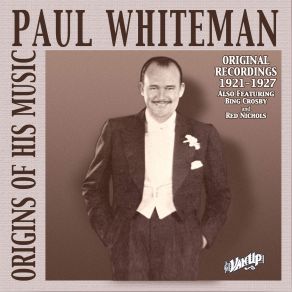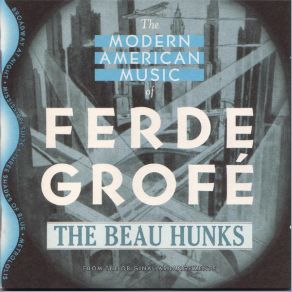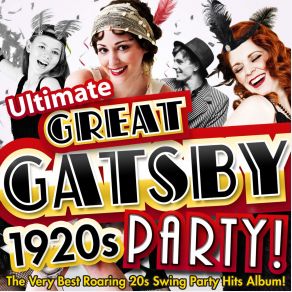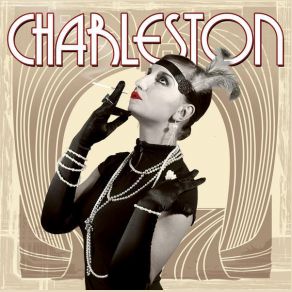Paul Whiteman
Wikimp3 information about the music of Paul Whiteman. On our website we have 49 albums and 70 collections of artist Paul Whiteman. You can find useful information and download songs of this artist. We also know that Paul Whiteman represents Jazz genres.
Biography
[Edit]Because press agents dubbed him "The King of Jazz" in the 1920s, Paul Whiteman has always been considered a controversial figure in jazz history. Actually, his orchestra was the most popular during the era and at times (despite its size) it did play very good jazz; perhaps "King of the Jazz Age" would have been a better title.
Originally a classically trained violinist, Paul Whiteman led a large Navy band during World War I and always had a strong interest in the popular music of the day. In 1918, he organized his first dance band in San Francisco and, after short periods in Los Angeles and Atlantic City, he settled in New York in 1920. His initial recordings ("Japanese Sandman" and "Whispering") were such big sellers that Whiteman was soon a household name. His superior dance band used some of the most technically skilled musicians of the era in a versatile show that included everything from pop tunes and waltzes to semi-classical works and jazz. Trumpeter Henry Busse (featured on "Hot Lips" and "When Day Is Done") was Whiteman's main star during the 1921-1926 period. Seeking to "make a lady out of jazz," Whiteman's symphonic jazz did not always swing, but at Aeolian Hall in 1924 he introduced "Rhapsody in Blue" (with its composer George Gershwin on piano) in what was called "An Experiment in Modern Music." Red Nichols and Tommy Dorsey passed through the band but it was in 1927, with the addition of Bix Beiderbecke, Frankie Trumbauer, and Bing Crosby (the latter originally featured as part of a vocal trio called the Rhythm Boys), that Whiteman began to finally have an important jazz band. Joe Venuti and Eddie Lang soon joined up, and many of Whiteman's recordings of 1927-1930 (particularly the ones with Bill Challis arrangements) are among his finest.
After Beiderbecke left the band in 1929 and Whiteman filmed the erratic but fascinating movie The King of Jazz in 1930, the Depression forced the bandleader to cut back on his personnel (which at one time included two pianos, tuba, bass sax, string bass, banjo, and guitar in its rhythm section). Although his orchestra in the 1930s at times featured Bunny Berigan, Trumbauer, and both Jack and Charlie Teagarden, Whiteman's music was considered old hat by the time of the swing era and he essentially retired (except for special appearances) by the early '40s. Many of his recordings (particularly those with Beiderbecke) have been reissued numerous times and are more rewarding than his detractors would lead one to believe. In the 1970s, Dick Sudhalter for a time organized and led "the New Paul Whiteman Orchestra" which recorded a couple of fine recreation records.
Title: Sitting On a Rainbow (Remastered) - Single
Artist: Paul Whiteman, Paul Whiteman And His Orchestra
Genre: Pop
Title: The Man I Love (Remastered) - Single
Artist: Paul Whiteman, Paul Whiteman And His Orchestra, Vaughn Deleath
Genre: Pop
Title: Let's Do It - Single
Artist: Paul Whiteman, Paul Whiteman And His Orchestra, The Rhythm Boys
Genre: Pop
Title: Together - Single
Artist: Jack Fulton, Paul Whiteman, Paul Whiteman And His Orchestra
Genre: Pop
Title: Rhapsody in Blue (Original 1927 Recording)
Artist: Paul Whiteman, Nathaniel Shilkret, George Gershwin, Ferde Grofé / Ferde Grofe
Genre: Jazz, Rock, Pop, Theatre/Soundtrack
Title: Three On a Match - Single
Artist: Paul Whiteman, Paul Whiteman And His Orchestra, Red McKenzie
Genre: Pop
Title: My Heart Stood Still (Remastered) - Single
Artist: Paul Whiteman, Paul Whiteman And His Orchestra, The Rhythm Boys
Genre: Pop
Title: Gershwin: Rhapsody in Blue & An American in Paris
Artist: Paul Whiteman, Philharmonic Orchestra
Genre: Jazz
Title: Should I (Remastered) - Single
Artist: Jack Fulton, Paul Whiteman, Paul Whiteman And His Orchestra
Genre: Pop
Title: Valencia - Single
Artist: Paul Whiteman, Paul Whiteman And His Orchestra, Franklyn Baur
Genre: Pop
Title: 1928-1929
Artist: Bix Beiderbecke, Paul Whiteman
Genre: Jazz, Vocal Jazz, Pop, Theatre/Soundtrack
Title: The Golden Age of Light Music: Great American Light Orchestras
Artist: David Rose, Percy Faith, Morton Gould, Victor Young, David Carroll, Paul Whiteman, Gordon Jenkins, André Kostelanetz / Andre Kostelanetz, Hugo Winterhalter, Frank De Vol, Hugo Winterhalter Orchestra, Richard Hayman, The Percy Faith Orchestra, The Mgm Studio Orchestra, Robin Hood Dell Orchestra, Leroy Anderson, Paul Whiteman And His Orchestra, Paul Weston And His Orchestra, Meredith Willson, Frank De Vol Orchestra, Paul Weston, André Kostelanetz Orchestra / Andre Kostelanetz Orchestra, The Orchestra, Monty Kelly, Victor Young Orchestra, Harry Horlick, Morton Gould Orchestra, David Rose's Orchestra, Macklin Marrow, Richard Hayman Orchestra, Gordon Jenkins Orchestra, David Carroll Orchestra, Harry Horlick Orchestra, Acquaviva Orchestra, Leroy Anderson 'Pops' Concert Orchestra, Meredith Willson Orchestra
Genre: Classical
Title: The Golden Age of Light Music: The 1930s
Artist: The BBC Dance Orchestra, Leslie, Paul Whiteman, Berliner Philharmoniker, Jack Hylton, Henry Hall, London Symphony Orchestra And Chorus, Marek Weber Orchestra, The Jack Hylton Orchestra, Louis Levy, Alfredo Campoli, Charles Shadwell, Fred Hartley, Haydn Wood, Eduard Künneke / Eduard Kunneke, Walter Goehr, Marek Weber, John Ansell, BBC Variety Orchestra, Fred Hartley's Quintet, Clifford Greenwood, Jeffries, Light Symphony Orchestra, London Palladium Orchestra, West End Celebrity Orchestra, Paul Whiteman Concert Orchestra, Alfredo Campoli Salon Orchestra, Leslie Jeffries Orchestra, Louis Levy Gaumont-British Symphony, New Light Symphony Orchestra, Joseph Lewis
Genre: Classical
Title: Liberace: Piano Classics
Artist: Paul Whiteman, Liberace, Paul Whiteman Concert Orchestra
Genre: Classical
Title: The Golden Age of Light Music: "Soloists Supreme"
Artist: Percy Faith, Norrie Paramor, Victor Young, Laurie Johnson, Robert Farnon, Paul Whiteman, Hugo Winterhalter, Hugo Winterhalter Orchestra, Werner Muller, Richard Hayman, Charles Williams, The Percy Faith Orchestra, Norrie Paramor And His Orchestra, Carroll Gibbons, Leroy Anderson, Rias Tanzorchester, Sidney Torch, Sidney Torch & Orchestra, Charles Shadwell, Ray Martin, Laurie Johnson Orchestra, The Savoy Hotel Orpheans, Victor Young Orchestra, Peter Yorke, BBC Variety Orchestra, Camarata Orchestra, Richard Hayman Orchestra, Ray Martin Concert Orchestra, Robert Farnon Orchestra, Charles Williams Concert Orchestra, Danish State Radio Orchestra, Leroy Anderson 'Pops' Concert Orchestra, Jackie Bond Orchestra, Paul Whiteman Concert Orchestra, Peter Yorke Concert Orchestra, Victor Young Singing Strings, Jackie Bond
Genre: Classical
Title: How About Me (Remastered) - Single
Artist: Paul Whiteman, Paul Whiteman And His Orchestra, Austin Young
Genre: Pop
Collections
Title: Top Hits of the 1930s
Genre: Rock
Title: Charleston All Night! The Very Best Of
Genre: Jazz
Genre: Jazz
Title: Top 100 Classics - The Very Best of the 1930's, Vol. 2
Genre: Jazz
Title: Top 100 Classics - The Very Best of the 1920's, Vol. 3
Genre: Jazz
Title: Jukebox Favourites - Hits of the 20s & 30s
Genre: Pop
Title: Speakeasy Music of the 1920's
Genre: Jazz
Title: Top 100 Classics - The Very Best of the 1920's, Vol. 2
Genre: Jazz
Title: Chart-Toppers of the '30s
Genre: Jazz
Title: 50 Big Bands and the Best Swing for Dancing
Genre: Jazz
Title: Top 100 Classics - The Very Best of the 1930's, Vol. 1
Genre: Jazz
Title: The Old Good Times (1934)
Genre: World Music
Title: Essential Jazz Vocal Groups [Live]
Genre: Jazz
Title: Boardwalk Empire - The Unofficial Soundtrack
Genre: Jazz
Title: Hits Of '30
Genre: Jazz
Title: Great Gatsby 1920's Summer Swing
Genre: Jazz
Title: 101 Big Bands Swing
Genre: Jazz
Title: Epic Music of the 1920's
Genre: Jazz
Title: 1920s Christmas - Rhythm & Booze
Genre:
Title: Historic Jazz Recordings, Vol. 3
Genre: Jazz
Title: Fascinating Rhythm - Great Hits of the 20s
Genre: Jazz
Title: The Charleston
Genre: Jazz
Title: The Old Good Times (1930-1931)
Genre: World Music
Title: Hits of '23
Genre: Jazz, Vocal Jazz
Title: Hits Of '26
Genre:
Title: A Retrospective Hits of 1933
Genre: Pop
Title: A Retrospective Hits of 1930
Genre: Pop
Title: Shake It and Break It!
Genre: Pop
Title: Jazz Goes Steampunk! Electro Swing Invasion
Genre: Electronica
Title: Let's Swing (Vol. 1)
Genre: Jazz
Title: Waltz By the Moonlight
Genre: Instrumental
Title: Hollywood Musical
Genre: Theatre/Soundtrack
Title: Hits Of '25
Genre:
Title: The Old Good Times (1937)
Genre: World Music
Title: 1920's Hit Tracks, Vol. 2
Genre: Jazz
Title: American Big Band Jazz 1926-1941
Genre: Jazz
Title: Charleston
Genre: Jazz
Title: Rodgers & Hart - The Collection
Genre: Rock, Theatre/Soundtrack
Title: Sing for Your Supper
Title: Musica futurista, Vol. 7 (Zavod)
Genre:
Title: Makin Whoopee
Genre:
Title: Waltzing Memories
Genre:
Title: The Good Times, Vol. 3
Genre: Jazz
Title: Let's Fall in Love (Remastered)
Genre: Jazz
Title: Hits of 1930
Genre: Pop
Title: The World's greatest Waltzes
Genre: Dancefloor, Dance Pop
Title: Best of the 20s, Vol. 3
Genre: Jazz
Title: George Gershwin Plays Gershwin
Genre:
Title: Swing Essentials, Vol. 6: Don't Stop Swinging
Genre: Jazz
Title: Jazz Sound Lexicon: 1935, Vol. 3
Genre: Jazz
Title: Tea For Two - Hits From 1925
Genre:
Featuring albums
Title: Jeepers Creepers (Original Motion Picture Score)
Artist: Bennet Salvay
Genre: Theatre/Soundtrack
Title: Get Low (Original Motion Picture Soundtrack)
Artist: Various Artists
Genre: Theatre/Soundtrack
Title: Jeepers Creepers Original Motion Picture Score
Artist: Various Artists
Genre: Pop, Theatre/Soundtrack, Classical, Vocal & Symphonic
Title: Down Santic Way
Artist: Various Artists
Genre: Electronica, Dancefloor, Reggae, World Music, Latin, Pop
Title: Down Santic Way - Santic Jamaican Productions Pressure Sounds 46
Artist: Various Artists
Genre: Reggae
Title: Jeepers Creepers: Original Motion Picture Score
Artist: Various Artists
Genre: Theatre/Soundtrack





























































































































































